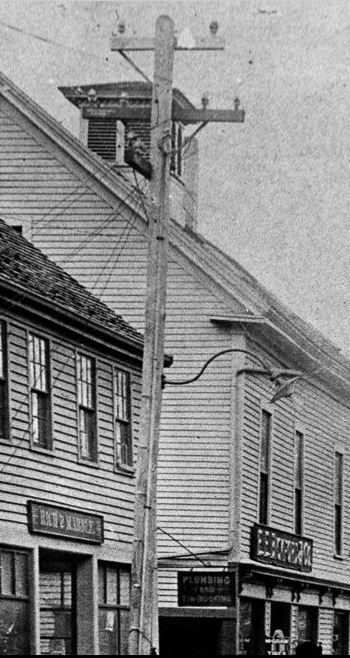Hingham Municipal Lighting Plant, MA, 1915. Fixture with New Type Filament Bulb.
By Joe Maurath, Jr.; posted July 8, 2020
View Original: Click to zoom, then click to magnify (350 x 658) 72KB

|
These lightbulbs were introduced in 1912 and the series street lighting service ones (which operated at a low voltage) had a very short and thick coiled filament that made their light output concise and quite bright, longer-lasting and overall much more economical than the older type they replaced. The latter had a long, straight (uncoiled) filament and were not as white when illuminated. It was standard practice in the utility industry soon after their introduction to upgrade to the new style bulbs. They operated in the same larger (mogul-base) sockets and their glass bulbs physically were a bit smaller than their predecessors. Of interest, their basic design was unchanged until street series lightbulbs were no longer manufactured as of a few years ago. Shown is an electric utility pole with an incandescent fixture in Hingham, MA during 1915 using one of the new types of bulbs. Also note the openwire service drops to customers. A transposition insulator on the top crossarm (on the right) deadended the series circuit on both sides for two wires for the street lamp beneath. As of 1915, the forementioned town-owned utility had 135 - 40 candlepower bulbs; 450 of 60 candlepower ones and 31 fixtures at 400 candlepower . Respectively, their light output was approximately the same as today's 40, 60 and 200 watt lightbulbs. Or, 400, 600 and 4,000 lumens. Of interest, the utility's general manager's salary was $1,600 per year. Their bookkeeper received $700 per year and his assistant, $400. There were two line department employees at the time, one earned $20 per week and the other $18. |